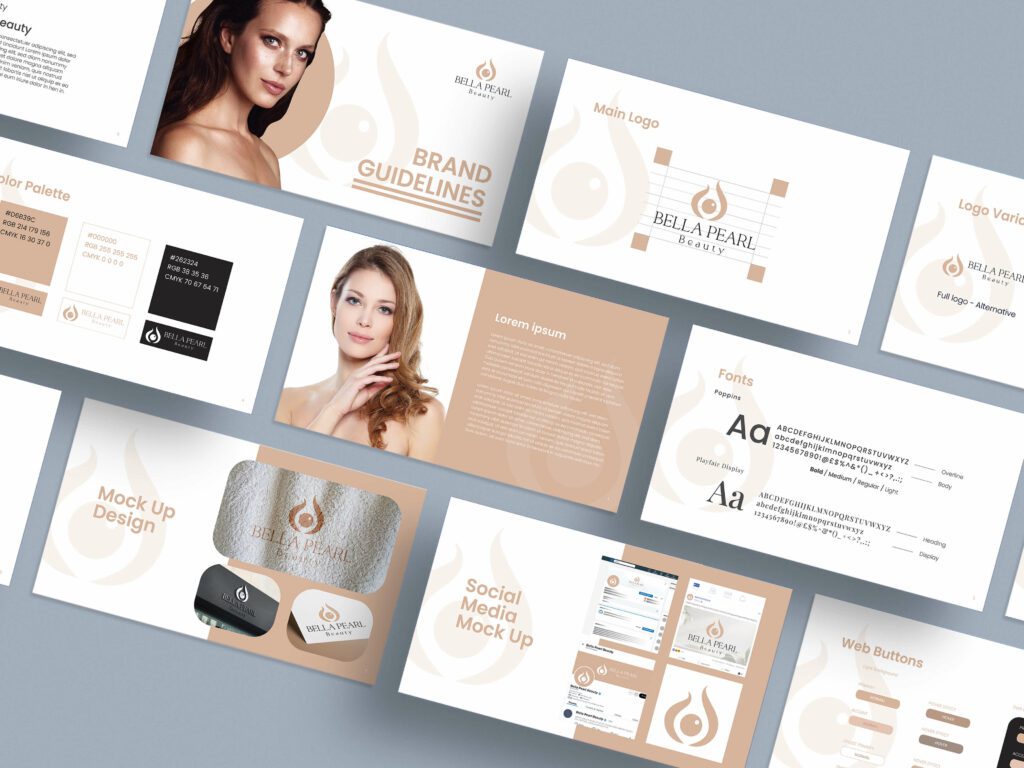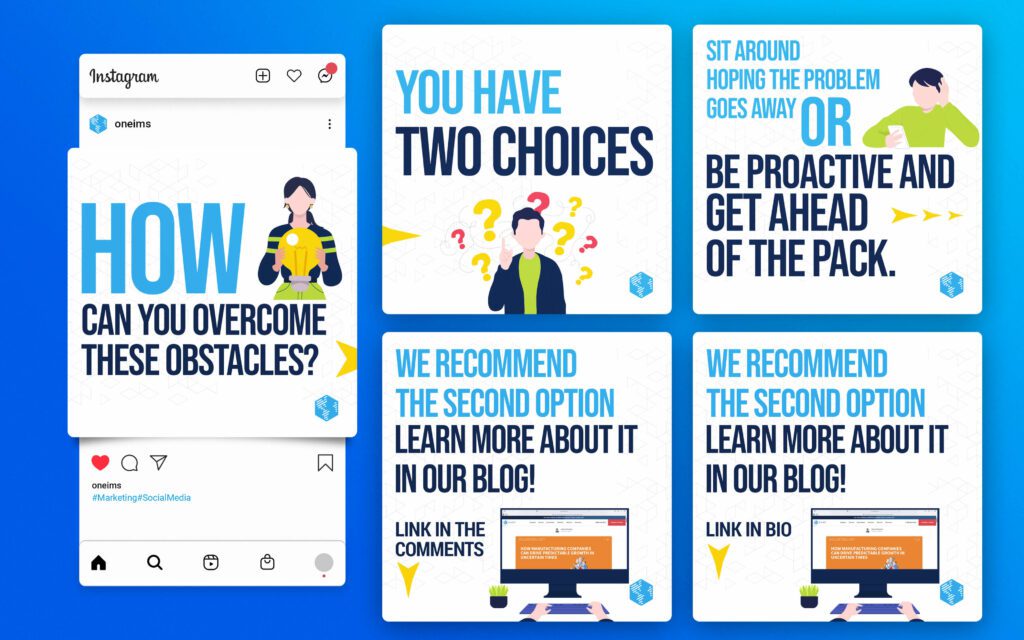Blog Vs Vlog: The Traffic Driver Your Brand Needs
Do you need a blog to grow your audience or a vlog? The internet tends to be divided when it comes to choosing blogging vs vlogging. After all, these have grown to become two of the most powerful content formats to create long-term engagement. The blog vs vlog differences are even more magnified when it comes to business marketing perspectives.

Blog or vlog – which one has the potential to help businesses engage their customers while also growing their brands? Which of these formats presents the most viable long-term benefits in terms of conversions? Or do brands need both? Let’s find out all about that in this blog.
Blogs – 3 reasons why your brand needs one
Blogging has become an essential component in branding today. The concept of blogging emerged from the idea of maintaining an online diary. In the past, a blog or “weblog” was an online documentation of personal stories. However, today it is so much more than that.
People use blogs to share:
- Industry-specific news and information
- Discuss products and brands
- Initiate conversations by expressing their views on various topics
- Present product reviews based on their experiences
And so much more. Brands looking to leverage blogs into their marketing often go with the first application – sharing information. A company blog is a great way for a growing business to showcase its expertise in a particular niche.

To understand the potential of a blog vs vlog in helping a business grow, we need to understand the unique benefits each brings in marketing. In that way, the following are the advantages of having an active company blog.
Drive more traffic to your website
Data shows that an informative blog can boost your website traffic by about 55%. That is of course when your blog posts are optimized for search. In other words, it means that your blogs are on-point when it comes to SEO.
The marketing agency Square2 capitalized on blogging as a part of their inbound marketing strategy. As a result, the brand was able to boost its website traffic by 2200%. That’s just one of the success stories that prove the point that blogs drive more traffic to a website.
Better traffic => Increase in leads => Better conversions
Build brand authority and trust
Building trust is perhaps the one area where business struggle. Because identifying the target audience and reaching out to them is easy these days thanks to social media and other communication channels. How you earn their trust after gaining their attention is the big question. And this is one place where the blog vs vlog conversation comes up most of the time.
Both blogs and vlogs are effective tools for building trust in your customers. Since we are talking about blogs first, we’ll tell you how blogs help build trust.

One of the most important uses of a blog is that it helps brands demonstrate their expertise in a particular area. Through tutorials or informative blog posts, you are showing your audience that you know what you are doing. Emphatically, people trust and engage with brands that are experts in their respective industries.
Additionally, by creating an active blog for your brand and allowing readers to subscribe to all the engaging content you share, you are building a community of like-minded people. These are people who start looking up to your brand as a credible source of information. Additionally, they are more likely to engage in conversations about your brand.
To sum it up, blogs help create a sense of authority for your brand and nurture better customer relationships.
Brand differentiation
In addition to the other evident benefits of blogging, brand differentiation is something that validates the effort that goes into creating and maintaining a company blog. Every blog post is a conversation with your customers and potential leads. Therefore, your blog is a representation of your brand personality as well. Through every blog post, you are showcasing not just your expertise in the field but also your brand’s unique tone of voice.
Through your blogs, you are sharing your brand’s story and therefore telling customers how you are different from your competitors.
Vlogs – 3 reasons why your brand needs them
Now in our blog vs vlog discussion let’s switch gears to talk about vlogs. Vlogs or video blogs became a trend ever since YouTube was introduced. We all love sharing stories and a video just makes this process so much simpler. That’s precisely why vlogging became so popular.
When Jawed Karim, co-founder of YouTube posted his first vlog titled “Me at the Zoo” on YouTube, he set a new trend.
From there, vlogging has come a long way. Today in addition to individual content creators sharing their life moments, brands share their stories through vlogs. Today vlogs can be both long-form videos and short-form videos. The context and the content are what decide which of these formats works better.
If you are sharing a demonstrative vlog that shows a peek into the process, long-form videos work. But in the case of quick behind-the-scenes stories, short-form vlogs are easier to capture and share.
To know the most important blog vs vlog differences, let’s talk about the unique benefits that vlogs bring to brands.
Humanize the brand
A faceless brand appears formidable and difficult to trust. For this reason, brands strive for humanization. Video poses as one of the most effective content formats to achieve this.
There are many ways in which brands can use vlogging for humanization and this includes:
- Showing the people behind the brand
- Capturing behind the scene videos that help establish transparency and therefore earn the trust of their customers
- Demonstrate company culture
- Share customer stories
Set and follow trends
The word “trends” rings differently in social media audiences. From quirky dance moves to filters, fun challenges, and more, there’s always some new trend to keep up with. Adapting to these changing topics and discussions can be hugely beneficial to brands. Vlogging helps tap into these benefits in the most effective manner.
There are two perks to following trends in the digital landscape and setting new ones. And they are:
- By following new trends you are taking part in the common conversation that brings together all your target customers. By doing this, you break the communication barrier between your brand and your customers.
- The second benefit is that when you set new trends or follow popular ones, you are increasing the chances of your content reaching a wider group of people. In other words, it gives your brand visibility a boost.
Kimp Tip: Even when you are creating vlogs that follow trends you still need to add your brand’s flavor to them. This is not a personal vlog where there is a single vlogger whose appearance instantly makes the video recognizable. Instead, you can build this familiarity in the form of standard brand-relevant video templates or the choice of fonts and other elements that align with your branding.
A more credible demonstration of products/services
Introducing your brand to your customers and showing what you do becomes much more convenient with vlogs. Since vlogs are raw documentation of events and do not appear orchestrated, they provide a more credible way to show your products/services in action.
Scenes recorded from the job site or a vlog showing a customer unpacking and setting up your product are all great ways to provide social proof to support your brand’s credibility.
Blog vs vlog – the final verdict
As you can see in the blog vs vlog dispute, both these formats do have their similarities:
- They both contribute to brand visibility
- Both vlogs and blogs help humanize your brand
- And they both help clearly define your brand’s unique tone of voice
However, they do have their differences. For example:
- When it comes to following a trend, a vlog is more likely to catch up quickly.
- But when it comes to providing a more in-depth description of a particular topic, a blog is a more practical option.
- The visual appeal of vlogs makes them suitable for the shortened attention spans of social media users of today.
- Whereas the SEO benefits that a blog brings help increase website traffic and also increase the life of the content in the long run.
Summing up, in addition to the common benefits of these formats, they both have their own unique benefits all of which are very convincing very much essential for marketing. So, for a brand to really make an impact on its audience, rise above the chatter and stay ahead of its competition, both blogs and vlogs are important.
So, the real question you should be asking is “How do you make your brand’s blog and vlogs stand out?”
Blog vs vlog – how do you make both of them work for your brand?
1. Visual consistency is no luxury
When we discuss the blog vs vlog differences, it’s important to understand that while these are important content formats, these are not the only ones in marketing. Marketing designs and branding designs come in several shapes and sizes. Some of these are digital and some are print. Some of these are used in indoor advertising and others in outdoor settings. The key is to ensure that they all look and feel like your brand.
Data shows that brands that have consistent branding and marketing designs are 3.5 times more effective in boosting their brand visibility. Because it takes multiple consistent impressions for people to get familiar with your brand.
To sum it up, there should be an easily noticeable visual consistency between your blog images, social media posts, vlog thumbnails, and other promotional content. Additionally, this consistent look should tie back to your brand identity as well.
Kimp Tip: From colors to fonts and visual styles, several elements help differentiate designs. Clear brand guidelines ensure visual consistency across platforms and across content formats.

For example, the color palettes used in your blog image or even the appearance of your logo in the blog images can be similar to the colors and logo position in your vlogs. This helps them feel instantly connected.
Need help creating your brand guidelines? Sign up for a Kimp subscription.
2. Focus on storytelling
Whether you are conveying a core industrial concept or something about your brand, try to convey the idea in the form of a story that is visually engaging. Blog vs vlog – irrespective of the format you use, storytelling can make things more interesting.
Videos have a definitive advantage here since visual formats are some of the most effective in telling stories. However, your blog does not have to fall behind either. You can use interactive visual add-ons like illustrations to convey the idea more clearly and to make the overall content more engaging and memorable.

3. Use social media effectively
In order to bridge the blog vs vlog gaps and to make them both work to their full potential, social media can be a great tool.
Earlier, there were limited options for sharing video content like vlogs. But now that most social media platforms let you share videos, make the most of them.
For example, when you create short-form vlogs, share them across all the popular platforms for short videos like TikTok, YouTube Shorts, and Reels on Facebook and Instagram. When it comes to long-form vlogs, you can always create a short version that gives a peek into the long video and builds anticipation. Share them on your Instagram Stories and drive traffic to your YouTube page.
Similarly, for promoting your blogs, consolidate the information in your blog in the form of carousels that give a gist of the information presented in your blog.

By sharing the carousel on platforms like Twitter, Instagram, Facebook, and LinkedIn, you can bring your social media audience to your blog.
Additionally, you can also create a short vlog that introduces a blog topic or a blog that expands on a brief discussion in a vlog. These are just a few ways in which you can leverage social media and repurpose content to make both blogs and vlogs reach a larger group of audience.
Settling the blog vs vlog dispute with relevant visuals
From all the benefits we discussed it is evident that brands need to expand their scope in terms of content formats. In other words, brands need to be ready to explore both traditional formats like blogs and contemporary formats like vlogs in order to stay ahead in the game.
In spite of the blog vs vlog differences, the fact remains that these are both storytelling aids for brands to build customer engagement. Moreover, they both help create consistent experiences for customers to remember the brand well and to feel connected with it in the long run. Since brands strive for all of these, it’s a good idea to tap into the potential of both these formats instead of missing out on their benefits falling into the blog vs vlog debate.
To keep up with all these content formats and also to keep them aligned with your brand and the rest of your branding all you need is a designated design team to take the weight off of your shoulders. A Kimp Graphics + Video subscription is what you need. Editing long videos, designing short videos, creating blog images and social media graphics to promote your blogs and vlogs – all of these designs in one place and at a flat monthly rate.
So, sign up for a free trial now and put an end to the blog vs vlog confusion once and for all.
